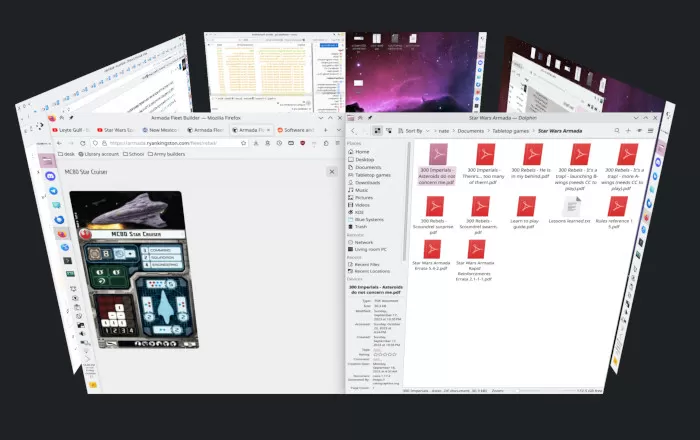- cross-posted to:
- linux_gaming@lemmit.online
- cross-posted to:
- linux_gaming@lemmit.online
Well known KDE developer Nate Graham is out with a blog post today outlining his latest Wayland thoughts, how X11 is a bad platform, and the recent topic of “Wayland breaking everything” isn’t really accurate.
“In this context, “breaking everything” is another perhaps less accurate way of saying “not everything is fully ported yet”. This porting is necessary because Wayland is designed to target a future that doesn’t include 100% drop-in compatibility with everything we did in the past, because it turns out that a lot of those things don’t make sense anymore. For the ones that do, a compatibility layer (XWayland) is already provided, and anything needing deeper system integration generally has a path forward (Portals and Wayland protocols and PipeWire) or is being actively worked on. It’s all happening!”



Running AMD/AMD right now for cpu/gfx, and I’m happy with my gaming laptop (and it’s price point).
Linux support and general support of open source was amajor factor in my decision. Intel is also really good on the CPU front, but I want to support AMD for its ooen source and speedy graphics offerings.
Also quite important to make sure we don’t have just a single strong x86 vendor - even though currently looking at price/performance you’d almost always go for AMD.
The time before ryzen was horrible - a 4-core-CPU was considered high end, and if you needed something more you needed to go for ridiculously overpriced Xeons. Similar for servers - you could get slightly higher core counts there, but when going for more than 8 cores it’d also get expensive very quickly.
Now we’re talking about 16 cores in high end notebook, and 64 cores in still reasonably priced pro workstations.
Indeed.